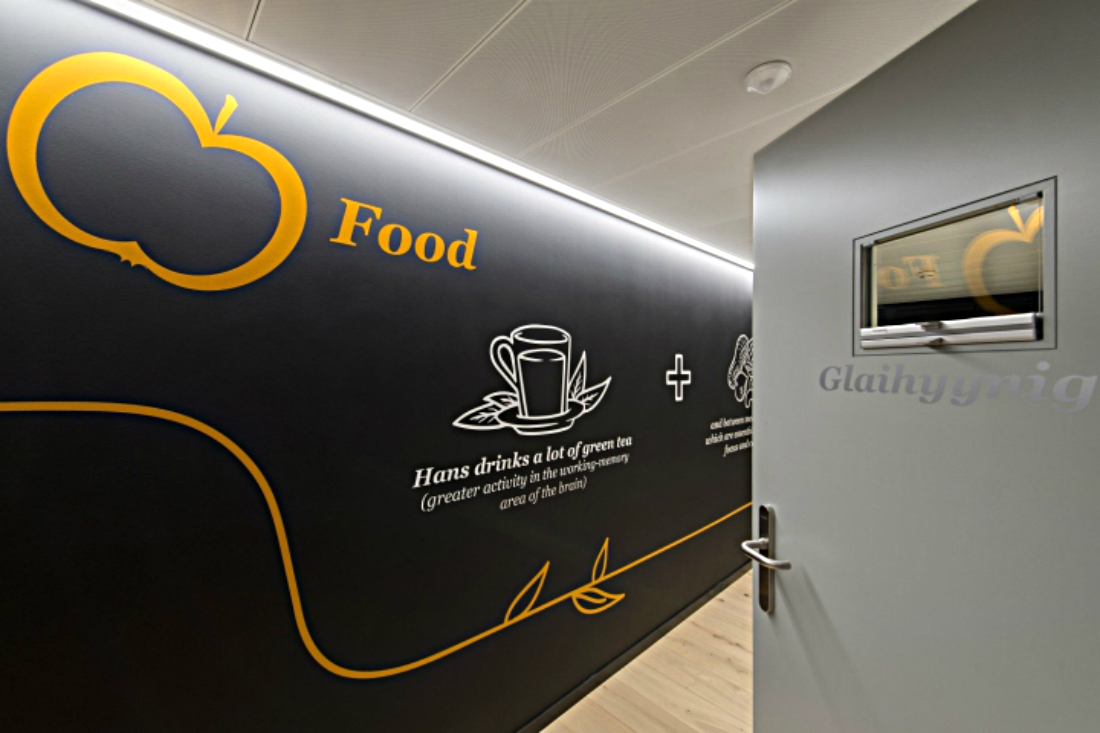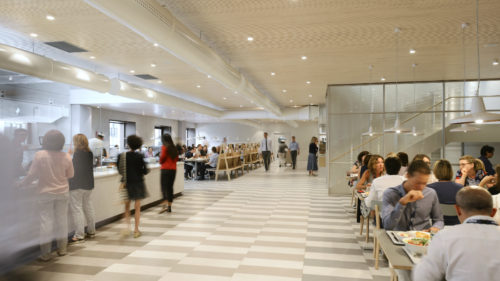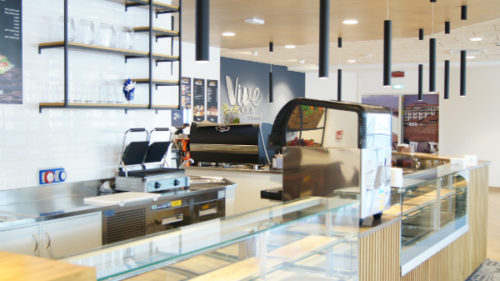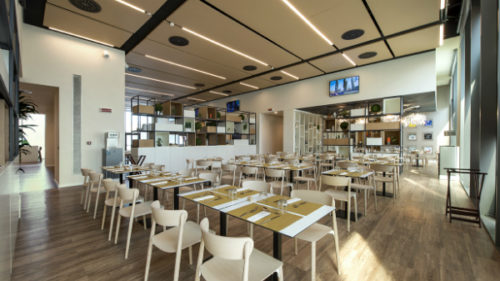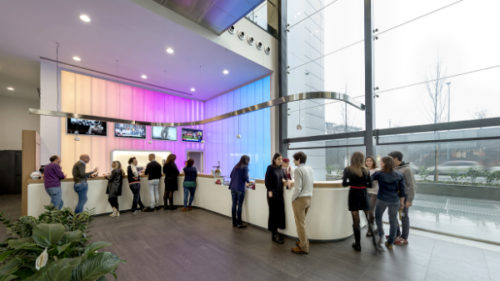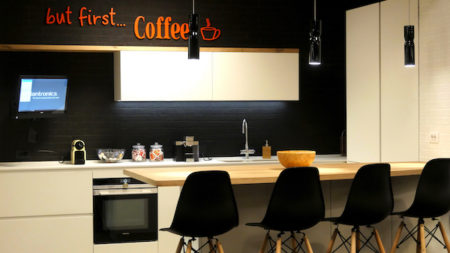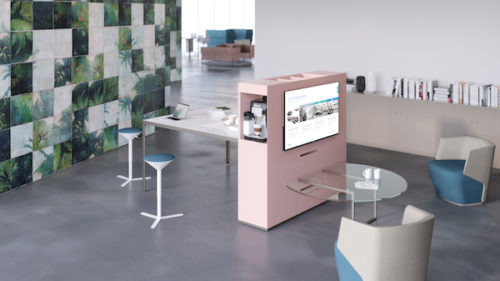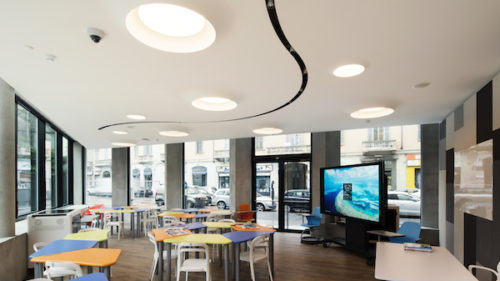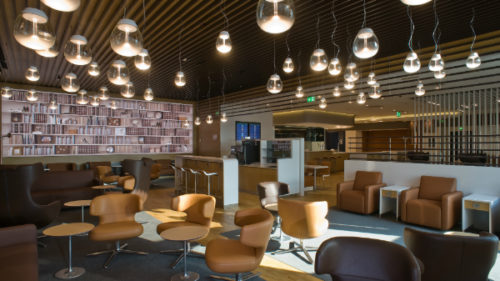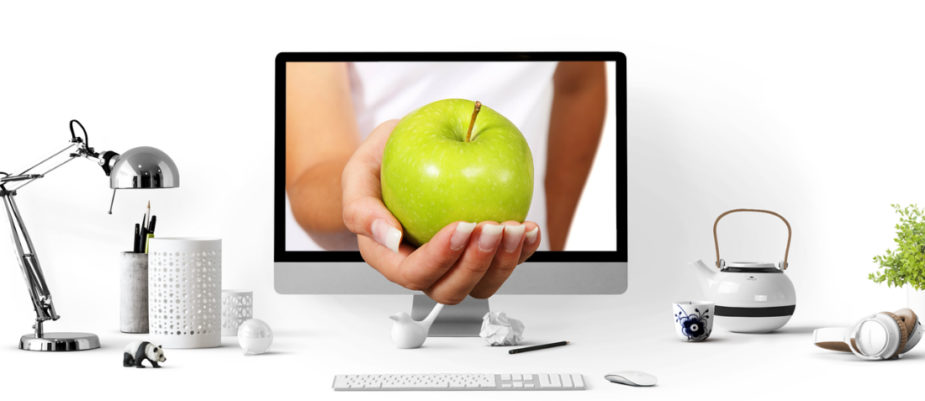
From the lunchbox to the open restaurant: the lunch break in the office has gone through a radical changing, taking a different meaning and function in the working environment and in the new ways of working: from isolation to conviviality, from a leak in the Tayloristic work organization to a fundamental frame of smartworking. Canteens, coffee area and restaurant are becoming very important features to guarantee the workers’ wellbeing, modifying their habits and re-discussing the borders between private and working life.
From a Tayloristic point of view, the lunch break has always been a waste of productive time, a separate moment that takes place in a bare canteen or in a restaurant outside the company, sometimes, to spare money, eating quickly the lunchbox prepared at home the evening before. But today food has another meaning in the office.
(On the left: Bistrot at Lavazza Campus; on the right Vive Café at the Hospital of Chivasso)
It all started when the office design began to consider the beauty and the functionality of the space as a priority, involving in this process also cafeterias and canteens, turning them into welcoming environment where it was pleasant to spend some extra time, apart from the “stop and go” of the lunch: breakfast, coffee break, or a moment before going back home, maybe buying something for the dinner there.
Cino Zucchi’s Bistrot for the Lavazza Campus or Vive Café by Sodexo at the Hospital of Chivasso are good examples of these aesthetic trends.
Meanwhile, taylorism has being overtaken by the idea that productivity was not about a strict organization, but a matter of flexibility, wellbeing, engagement and giving the people the possibility of changing the environment they live in, based on their needs. At the same time, new technologies were allowed to go over the office space, fostering the agile and smartworking.
The new ‘nomadic’ ways of working have created different problems regarding food, which different solution, like CucinaBarilla, have tried to solve, but at the same time have turned the office in a “home” where to come back, where to relax or to meet other colleagues to be adjourned or to define new strategies.
(Restaurant and Coffee area at Sky HQ in Milan)
Therefore, the moment of the lunch break, as it was intended, does not exist anymore it was fragmented into several informal meetings that happen during the day. Company’s canteen and restaurant have become spaces where different things happen such as conference calls, training and events take place.
Food has also become a fundamental element throughout the office with the spreading of meeting and break areas, as in the Sky HQ in Milan, in the Italian Plantronics’s Office and the multifunctional islands COffice by Estel.
(On the left Plantronic’s Office; on the right an example of the multifunctional Island COffice)
Finally, the consumption of food and beverage has changed together with the development of technologies which allow to book a seat in the company restaurant or to find a free break area whenever you feel like, where the attention is paid to the workers’ wellbeing and to the willing to open the office space towards the city, turning business park into something similar to an university campus.
As the Technogym HQ shows, companies created gourmet and bio restaurants and bistros with healthy menus and coffee areas with smoothies and fruit juice, changing our habits of eating and becoming more appealing for the citizenship.
(On the left the Microsoft House; on the right Lounge Lufthansa)
Even in a workplace as the Microsoft House in Milan where there is no company restaurant, a library and café have been designed at the ground floor, a transparent agora that cancels the boundaries between the office and the city.
Eventually, food has become a crucial knot of the wider web of relationship that, nowadays, labour market is. Maybe the office of the future will be like the Lounge Lufthansa at Milano Malpensa airport: places of seamless coming and going, where the five senses are stimulated to create a richer experience of the space and where the engagement and fulfilment are reached also through a pocket lunch, cooked at our workplace, symbol of something we might call “home”.
Text by Gabriele Masi.
